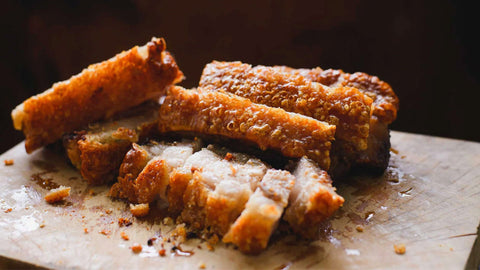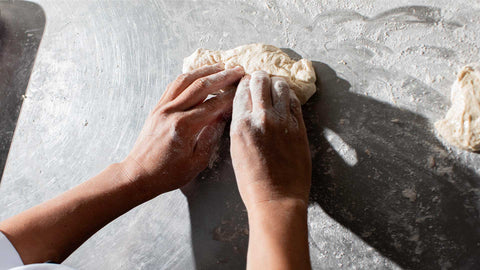Growing up in a household where the aroma of dishes filled family gatherings, I've always felt a deep connection to the king of Filipino cuisine: pork. The irresistible smell of fried pork cooking on the stove, the aroma of garlic and onions mixed with the sharp sourness of tamarind for sinigang reminds me of afternoons spent cooking, celebrating, and savoring each spoonful of the tender meat. Pork has become an integral pillar of Filipino cuisine, weaving together our past and present—tradition and innovation.
Recent reports show that meat consumption in the Philippines is increasing, with pork being the most popular type of meat among Filipinos. In last year’s forecast, pork was predicted to be consumed at a rate of 15 kilograms per person. However, it's not just about the numbers. Beyond its delicious taste, the history of pork and its role in our cultural heritage paint a vivid picture of our identity.
Long before colonization, pork had held a sacred position in pre-colonial Filipino society. It wasn't merely a meal; rather, it was an offering to the gods, symbolizing reverence and serving as a focal point of communal feasts. Its presence in rituals symbolized abundance, fertility, and divine blessings. This ancient veneration for pork continues to influence modern Filipino culinary practices significantly.
At the heart of our celebrations lies the iconic lechon—a roasted whole pig that graces our tables during festivities, epitomizing joy and unity. The tender meat, distinct flavors, and the crackling sound of lechon skin evoke nostalgic memories, transporting me back to festive occasions like town fiestas and family reunions where my community comes together to celebrate. The intricate preparation and communal sharing of lechon capture the spirit of our celebrations, where every bite is shared happiness and cherished memories.
With every spoonful of soup and every morsel of pork, I feel a connection to my roots, a taste of home that brings me comfort and joy.
Yet, beyond the grandeur of lechon, pork manifests itself in everyday ulam staples—the tangy, salty, and sweet embrace of adobo, the comforting sourness of sinigang, and the indulgent richness of kare-kare—becoming an integral component of our daily meals. It's within the nuanced blend of spices, secret ingredients, and heirloom cooking techniques that each recipe carries heritage and innovation.
The enduring love for pork in Filipino kitchens intertwines with the art of food preparation with communal dining. Techniques vary per region: some marinate it in vinegar and soy sauce, or slow cook them in tangy tamarind broth, while others sizzle them on a hot plate with spices and citrus. Grilled, stewed, roasted, braised, or fried, pork showcases its versatility, tantalizing taste buds across generations, infusing every dish with a depth of flavor that echoes the heart of Filipino identity.

Spanish colonization left an indelible mark on our cuisine, integrating pork into various traditional dishes. The Spanish influence introduced techniques like curing and flavor profiles that seamlessly merged with our local ingredients and cooking methods. This cultural fusion birthed iconic dishes like longganisa and embutido, infusing Filipino pork dishes with a depth of flavor that resonates with our palates.
Pork's prominence in Filipino cuisine speaks volumes about its ability to unite people, evoke cherished memories, and mirror our cultural heritage. As a symbol of celebration, a staple in daily meals, and a testament to our history, pork embodies the spirit of Filipino cuisine—a harmonious blend of tradition and innovation. Its versatility mirrors the diversity of our people and the vibrancy of our culture. It isn’t just a meal; it is the perfect vessel for our food culture where each recipe tells a story, carrying the flavors of our history and the warmth of shared meals with loved ones.
It’s during these moments that stories are exchanged, that laughter echoes, that bonds are strengthened over steaming plates of pork sinigang. With every spoonful of soup and every morsel of pork, I feel a connection to my roots, a taste of home that brings me comfort and joy.
Cover photo by U2M Brand. In-article photo by jcalvera.
--
Over time, our culinary practices have advanced, and so does our expectations for food production. In the Philippines, we prioritize quality by adhering to sustainable farming practices that prioritize the welfare of both livestock and the environment. At Joel’s Place, you are guaranteed to find only the finest pork products sourced from the best local and international producers of pork goods. We take pride in providing hormone-free pork, ensuring the food we provide is fresh, safe, and nutritious for your tables.





